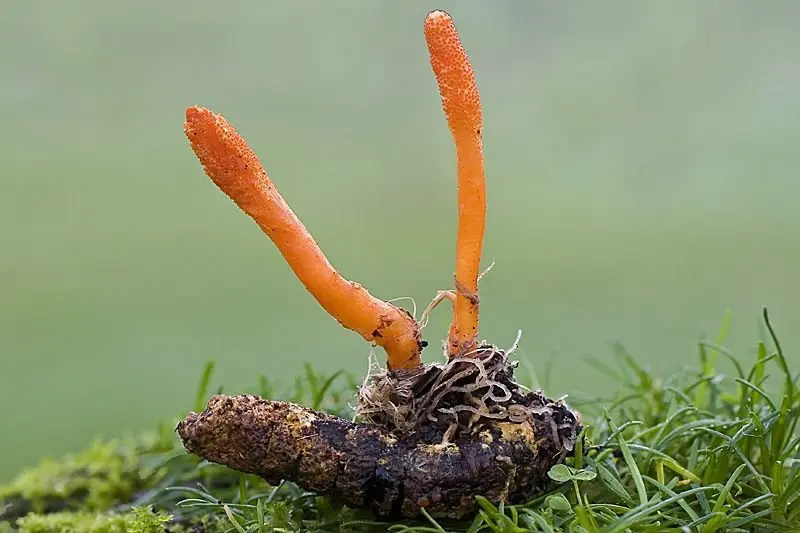Cordyceps military (Cordyceps militaris)
- Department: Ascomycota (Ascomycetes)
- Subdivision: Pezizomycotina (Pezizomycotins)
- Class: Sordariomycetes (Sordariomycetes)
- Subclass: Hypocreomycetidae (Hypocreomycetes)
- Order: Hypocreales (Hypocreales)
- Family: Cordycipitaceae (Cordyceps)
- Genus: Cordyceps (Cordyceps)
- Type: Cordyceps militaris (Cordyceps military)

Description:
Stromas solitary or growing in groups, simple or branched at the base, cylindrical or club-shaped, unbranched, 1-8 x 0,2-0,6 cm, various shades of orange. The fruiting part is cylindrical, club-shaped, fusiform or ellipsoid, warty from the stomata of the perithecia protruding in the form of darker points. The stem is cylindrical, pale orange or almost white.
The bags are cylindrical, 8-spore, 300-500 x 3,0-3,5 microns.
Ascospores are colorless, filamentous, with numerous septa, almost equal in length to the bags. As they mature, they break up into separate cylindrical cells 2-5 x 1-1,5 microns.
The flesh is whitish, fibrous, without much taste and smell.
Distribution:
Military Cordyceps is found on butterfly pupae buried in the soil (very rarely on other insects) in forests. Fruiting from June to October
Evaluation:
Edibility is not known. Cordyceps military has no nutritional value. It is actively used in oriental medicine.









